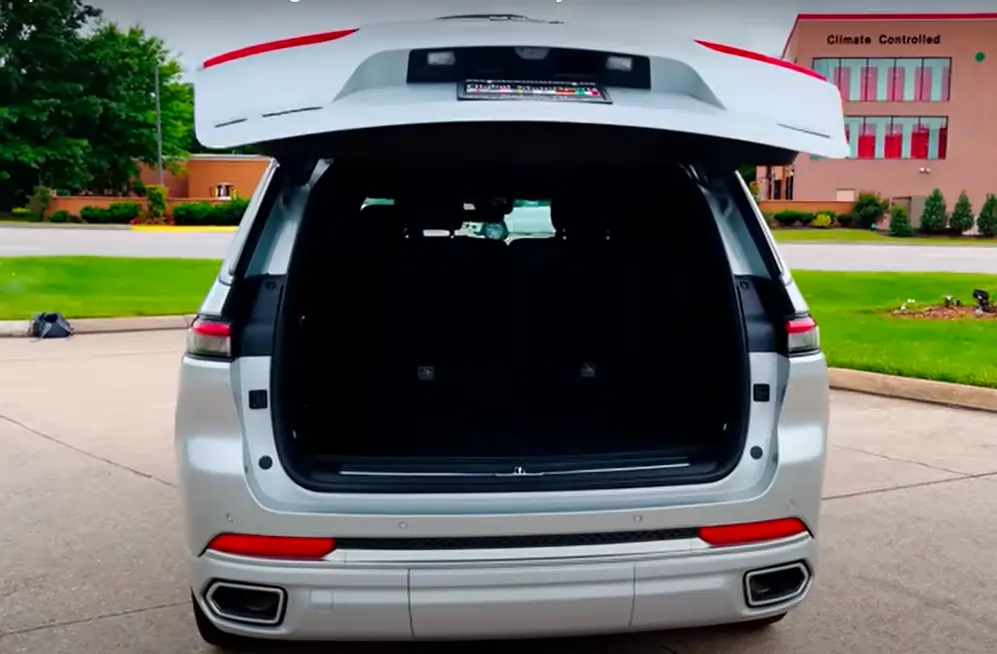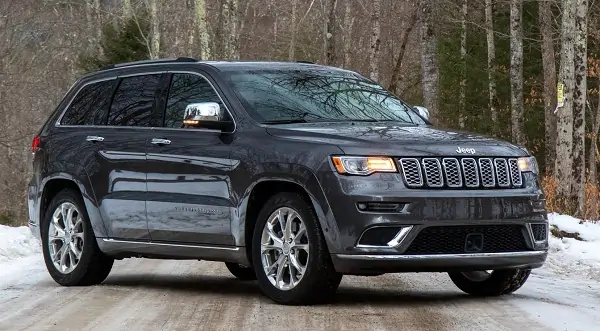To put a Jeep in 4 wheel drive, engage the transfer case by shifting the lever or pressing the button labeled “4WD” or “4H” while the vehicle is in neutral or at a complete stop. Welcome to this guide on how to put a Jeep in 4 wheel drive.
Off-roading enthusiasts understand the importance of engaging four-wheel drive in challenging terrains to increase traction and maneuverability. Whether you have a Jeep Wrangler or Cherokee, activating 4WD is a simple process. We will provide you with step-by-step instructions on how to engage your Jeep’s four-wheel drive system.
So, let’s get started and enhance your off-road capabilities with ease.
Understanding The Basics Of A Jeep’s 4 Wheel Drive System
Understanding the basics of a Jeep’s 4 Wheel Drive (4WD) system is crucial for off-roading enthusiasts. When you take your Jeep out on the trail, having a good understanding of how the 4WD system works and its key components will help you make the most of your off-road adventures. In this article, we will delve into the inner workings of a Jeep’s 4WD system, explore its key components, and discuss the benefits of using 4WD in off-roading.
How A 4 Wheel Drive System Works
A Jeep’s 4WD system allows power to be distributed to all four wheels, enhancing traction and maneuverability in off-road conditions. The system ensures that power flows to both the front and rear axles, enabling the wheels to maintain traction even in challenging terrain.
Key Components Of A Jeep’s 4 Wheel Drive System
The 4WD system in a Jeep consists of several key components that work together to achieve optimal off-road performance:
- Transfer Case: The transfer case is responsible for distributing power from the transmission to both the front and rear axles. It allows drivers to select different modes, such as 2H (two-wheel drive), 4H (four-wheel drive high), and 4L (four-wheel drive low), depending on driving conditions.
- Front and Rear Axles: The axles transmit power from the transfer case to the wheels. In a traditional 4WD system, both the front and rear axles receive power.
- Differentials: Differentials allow the wheels on each axle to rotate at different speeds, which is essential for cornering and maneuverability.
- Driveshafts: Driveshafts connect the transfer case to the front and rear axles, allowing power to flow through the drivetrain.
- Locking Mechanisms: Some Jeeps come equipped with locking differentials or limited-slip differentials, which can be engaged to ensure power is evenly distributed to all wheels in challenging off-road situations.
Benefits Of Using 4 Wheel Drive In Off-roading
Utilizing 4WD in off-roading offers several advantages that can help you conquer challenging terrain:
- Improved Traction: With power distributed to all four wheels, a 4WD system provides superior traction in slippery or uneven conditions, such as mud, snow, or rocky terrain.
- Increased Ground Clearance: Many 4WD vehicles, including Jeeps, have higher ground clearance, allowing you to navigate over obstacles without damaging the undercarriage.
- Enhanced Climbing and Descending Ability: 4WD systems can assist in climbing steep inclines or descending steep slopes by maintaining traction and providing control.
- Better Off-Road Performance: Engaging 4WD gives your Jeep the necessary power and grip to conquer off-road trails confidently, expanding your possibilities for adventure.
Preparing Your Jeep For 4 Wheel Drive Engagement
Before you head off-road and engage your Jeep’s 4-wheel drive, it’s crucial to take some essential steps to ensure your vehicle is ready for the demanding conditions it will face. By preparing your Jeep correctly, you can maximize its performance, protect its components, and have a safe and enjoyable off-roading experience.
Checking The Condition Of The Tires And Suspension
One of the first things you should do when preparing your Jeep for 4-wheel drive engagement is to check the condition of the tires and suspension. These components play a crucial role in providing traction and stability, especially off-road. Here’s what you need to do:
- Inspect the tires for any signs of wear, damage, or uneven tread wear. If you notice any issues, it’s important to address them before engaging 4-wheel drive.
- Check the tire pressure and ensure it is at the recommended level. Proper tire pressure not only improves traction but also helps prevent tire damage.
- Examine the suspension system for any signs of damage, leaks, or worn-out components. Pay attention to shocks, springs, and control arms. Any issues should be fixed before hitting the trails.
Ensuring The Transfer Case And Differentials Are Properly Lubricated
In order for your Jeep’s 4-wheel drive system to function properly, it’s crucial to ensure that the transfer case and differentials are properly lubricated. Without adequate lubrication, these components can experience excessive wear and even failure. Follow these steps to ensure proper lubrication:
- Check the transfer case and differential fluid levels. Refer to your Jeep’s owner’s manual for the specific location of the fill and drain plugs and the recommended fluid type.
- If the fluid levels are low, carefully add the appropriate fluid until it reaches the recommended level. Take care not to overfill.
- Inspect the fluid for any signs of contamination, such as metal shavings or a milky appearance, which could indicate internal damage. If you notice any issues, it’s best to consult a professional for further inspection.
Verifying The Functionality Of The 4 Wheel Drive Selector And Engagement System
The 4-wheel drive selector and engagement system are critical for proper operation of your Jeep’s 4-wheel drive. Before venturing into challenging off-road terrains, it’s crucial to verify their functionality. Here’s what you should do:
- Start by visually inspecting the 4-wheel drive selector switch or lever. Ensure that it is properly labeled and in good condition.
- Activate the 4-wheel drive system according to your Jeep’s specific instructions. This may involve turning a switch, pulling a lever, or engaging manual locking hubs.
- Listen for any unusual noises or vibrations during engagement, as these could indicate a problem with the system. Additionally, visually verify that the 4-wheel drive indicators on the instrument cluster or dash are functioning correctly.
By performing these necessary checks and inspections before engaging your Jeep’s 4-wheel drive, you can ensure that your vehicle is in optimal condition for off-roading. Taking the time to prepare your Jeep correctly will not only enhance its performance and durability but also contribute to a safe and enjoyable off-road adventure.
Engaging 4 Wheel Drive Mode In Your Jeep
If you own a Jeep, you may already know that one of its most exciting features is its 4 wheel drive capability. Whether you’re planning an off-road adventure or need enhanced traction on slippery roads, engaging 4 wheel drive in your Jeep can be a game-changer. In this article, we will guide you step-by-step on how to put your Jeep in 4 wheel drive and help you understand the different types of 4 wheel drive modes available. We’ll also provide some considerations to keep in mind when engaging 4 wheel drive in different terrains and conditions. So, let’s dive right in!
Step-by-step Guide To Putting Your Jeep In 4 Wheel Drive
- First, ensure that your Jeep is at a complete stop and in park or neutral.
- Locate the 4 wheel drive shifter or dial. This can usually be found on the center console or dashboard, depending on the Jeep model.
- Identify the different modes available on your Jeep. Common options include 2H (2 wheel drive), 4H (4 wheel drive high), and 4L (4 wheel drive low).
- To engage 4 wheel drive high (4H), simply shift the shifter or turn the dial to the corresponding mode. You may need to press a button or pull a lever, depending on your Jeep’s design.
- For 4 wheel drive low (4L), first shift into neutral and engage the parking brake. Then, shift the shifter or turn the dial to 4L. Follow your Jeep’s specific instructions regarding any additional steps, such as pressing buttons or pulling levers.
- Once you’ve selected the desired 4 wheel drive mode, verify that it has engaged by observing the corresponding indicator light on the dashboard.
- Take your Jeep for a test drive. Start slowly and pay close attention to how your Jeep handles in the selected 4 wheel drive mode, making any necessary adjustments to fit your driving conditions.
Understanding The Different Types Of 4 Wheel Drive Modes In A Jeep
Jeep vehicles offer various 4 wheel drive modes to adapt to different driving conditions:
| Mode | Description |
| 2H | 2 wheel drive mode, suitable for normal road conditions when enhanced traction is not needed. |
| 4H | 4 wheel drive high mode, ideal for off-road adventures or when driving on slippery surfaces. It distributes power to all four wheels, improving traction and stability. |
| 4L | 4 wheel drive low mode, designed for challenging terrains such as steep inclines or deep mud. It provides maximum torque at low speeds, enabling your Jeep to conquer tough obstacles. |
Considerations For Engaging 4 Wheel Drive In Different Terrains And Conditions
While engaging 4 wheel drive in your Jeep can provide enhanced traction and maneuverability, it’s important to consider the following factors:
- Driving surface: Evaluate the terrain you’ll be navigating, whether it’s rocky trails, sand dunes, or snow-covered roads. Select the appropriate 4 wheel drive mode that suits the specific conditions.
- Traction control: Depending on your Jeep model, it may have additional features like traction control or limited-slip differentials that work together with 4 wheel drive. Familiarize yourself with these features to optimize your Jeep’s performance.
- Tire pressure: Maintain proper tire inflation for optimal grip and performance. Refer to your Jeep’s manual for recommended tire pressures in various driving scenarios.
- Weather conditions: Adjust your driving style and 4 wheel drive mode based on weather conditions. Be cautious when driving on icy or wet roads, as 4 wheel drive alone may not fully compensate for reduced traction.
By following these steps and considering the factors mentioned, you can effectively engage 4 wheel drive in your Jeep and make the most of its impressive off-road capabilities. Remember to always prioritize safety and responsible driving, and enjoy your exciting Jeep adventures!
Best Practices For Driving In 4 Wheel Drive
Discover the best practices for engaging 4 wheel drive in a Jeep with these helpful tips. Learn how to navigate various terrains and enhance your off-roading experience.
When it comes to off-roading and exploring rugged terrains, having your Jeep in 4-wheel drive can provide that extra traction and control you need. However, simply engaging 4-wheel drive is not enough to ensure a smooth and safe off-roading experience. Adjusting your driving technique, understanding the limitations of 4-wheel drive, and knowing how to maintain traction are all crucial factors for optimal off-roading control. In this section, we will discuss these best practices in detail.
Adjusting Your Driving Technique For Optimal Off-roading Control
Driving in 4-wheel drive requires a different approach compared to regular driving. Here are some key techniques to keep in mind:
- Start by maintaining a slow and steady pace. Going too fast can lead to loss of traction and control.
- Utilize proper gearing to match the terrain. This will ensure the engine delivers adequate power to the wheels for optimal performance.
- When climbing steep hills or descending slopes, always maintain your speed and avoid sudden bursts of acceleration or braking.
- Keep a firm grip on the steering wheel to effectively navigate through obstacles and maintain control.
- When making turns, remember that 4-wheel drive enhances the vehicle’s handling and stability. However, it’s important to avoid sharp turns and sudden maneuvers that could compromise traction.
Understanding The Limitations Of 4-wheel Drive In Certain Situations
While 4-wheel drive is a fantastic feature for off-roading, it’s essential to be aware of its limitations. Here are a few situations where 4-wheel drive may not provide the desired results:
- Driving on icy or extremely slippery surfaces: 4-wheel drive can improve traction, but it doesn’t guarantee complete control. Always exercise caution when driving on icy roads or other slippery surfaces.
- Driving through deep water: Although 4-wheel drive can help you navigate shallow streams or puddles, avoid driving in deep water. Excessive water can damage the vehicle’s components, including the sensitive electrical systems.
- Navigating tight turns: While 4-wheel drive enhances stability, it can make tight turns more challenging. Be mindful of your vehicle’s turning radius and adjust your approach accordingly.
Tips For Maintaining Traction And Preventing Wheel Spin While Off-roading
When off-roading, maintaining traction is crucial to prevent wheel spin and ensure a safe and enjoyable experience. Here are some effective tips:
- Choose the right tires for the terrain. Off-road tires with aggressive tread patterns provide enhanced grip and traction.
- Decrease tire pressure to increase the surface area and improve traction in soft surfaces such as sand or mud. Just remember to reinflate them once you return to regular road conditions.
- Engage your axle lockers when encountering extremely uneven or challenging terrains. This feature ensures power is evenly distributed to all wheels to maintain traction.
- Consider using a spotter in complex off-roading scenarios. They can help guide you through obstacles, preventing wheel spin and potential damage to your vehicle.
- Don’t forget to maintain regular maintenance on your Jeep, including checking and replacing worn-out parts. A well-maintained vehicle performs more reliably, especially in off-road conditions.
By applying these best practices and techniques, you can maximize the benefits of driving in 4-wheel drive while off-roading. Remember to prioritize safety, adapt to the terrain, and always be mindful of the limitations of your vehicle. Now, you’re ready to explore the great outdoors with confidence!
Safely Disengaging 4 Wheel Drive Mode In Your Jeep
Knowing how to engage and disengage 4 wheel drive mode in your Jeep is essential for off-roading enthusiasts. In our previous post, we covered the step-by-step guide to putting your Jeep in 4 wheel drive. Now, let’s dive into the equally important topic of safely disengaging 4 wheel drive mode. This crucial step ensures your Jeep continues to perform optimally and prevents potential damage or stress to the drivetrain.
Step-by-step Guide To Safely Taking Your Jeep Out Of 4 Wheel Drive
Disengaging 4 wheel drive in your Jeep is a straightforward process. Follow this step-by-step guide to ensure a smooth transition back to 2 wheel drive:
- Bring your vehicle to a complete stop.
- Shift the transmission into neutral, and while keeping your foot on the brake, shift the transfer case into 2 wheel drive mode.
- Release the brake pedal and shift the transmission into drive or reverse.
- As you start moving forward or backward, engage the brakes again and verify that your Jeep is no longer in 4 wheel drive mode.
Following these steps will help you disengage 4 wheel drive safely and efficiently, preventing any unnecessary strain on your Jeep.
Recommended Procedures For Disengaging 4 Wheel Drive In Different Situations
The procedure mentioned above is the general method for disengaging 4 wheel drive in your Jeep. However, there may be specific scenarios in which you need to take additional precautions:
- If you were driving in particularly rough off-road terrain, it’s a good practice to engage the brakes firmly at the moment of disengagement to ensure a smooth transition.
- If you’re descending a steep hill or coming to a stop on an incline, engage the parking brake before disengaging 4 wheel drive. This prevents your Jeep from rolling while shifting.
- In snowy or icy conditions, it’s advisable to disengage 4 wheel drive on a straight and level surface to reduce the chances of slipping or sliding.
| Mistake | Potential Damage |
| Disengaging at high speeds | Risk of damaging the transfer case |
| Forgetting to shift the transmission into neutral | Difficulty in shifting the transfer case |
| Disengaging on uneven or resistant terrain | Strain on the drivetrain components |
By following these recommended procedures, you can ensure a safe and proper disengagement of 4 wheel drive in various situations, minimizing any potential damage or stress on your Jeep.
How To Avoid Potential Damage Or Drivetrain Stress When Switching Back To 2 Wheel Drive
Switching back to 2 wheel drive from 4 wheel drive may seem simple, but there are a few key points to note in order to avoid potential damage or stress to your vehicle’s drivetrain:
- Always bring your Jeep to a complete stop before shifting out of 4 wheel drive mode.
- When disengaging, ensure the transmission is shifted into neutral to allow for a smooth transfer within the transfer case.
- Release the brake pedal only after shifting the transfer case and transmission.
- Verify that your Jeep is successfully back in 2 wheel drive mode by checking for any warning lights or unusual noises.
Following these guidelines will help prevent any potential damage or unnecessary stress on your drivetrain when switching back to 2 wheel drive.
Frequently Asked Questions For How To Put A Jeep In 4 Wheel Drive
Can I Shift My Jeep Into 4wd While Driving?
No, you should not shift your Jeep into 4wd while driving. It’s best to shift into 4wd before you begin driving, or while the vehicle is at a complete stop. This will help avoid damage to the drivetrain and ensure safe operation.
Do I Put My Jeep In 4h Or 4l?
To determine whether to put your Jeep in 4H or 4L, assess the driving conditions. Use 4H (4 High) for slippery or uneven terrain like snow or gravel. Reserve 4L (4 Low) for steep inclines or extreme off-road situations requiring maximum torque.
Choose wisely based on the situation at hand.
How Do You Put A Jeep In 4 Wheel Drive 2023?
To put a Jeep in 4 wheel drive for the 2023 model, locate the 4WD control knob or switch in the cabin. Turn the knob or switch to the 4H (4 High) position. This engages the 4 wheel drive mode, providing improved traction and off-road capability.
Do You Have To Be In Neutral To Switch To 4wd?
No, you don’t have to be in neutral to switch to 4WD. Some vehicles allow switching while in motion. Check your car’s manual for specific instructions.
Conclusion
Putting a Jeep in 4-wheel drive is a simple process that can greatly enhance your off-roading experience. By following these steps, you can easily engage and disengage the 4WD system, ensuring optimal performance on challenging terrain. Remember to consult your vehicle’s manual for specific instructions and safety guidelines.
So, get ready to take your Jeep on thrilling adventures and explore new horizons with confidence and control. Happy off-roading!














Leave a Reply